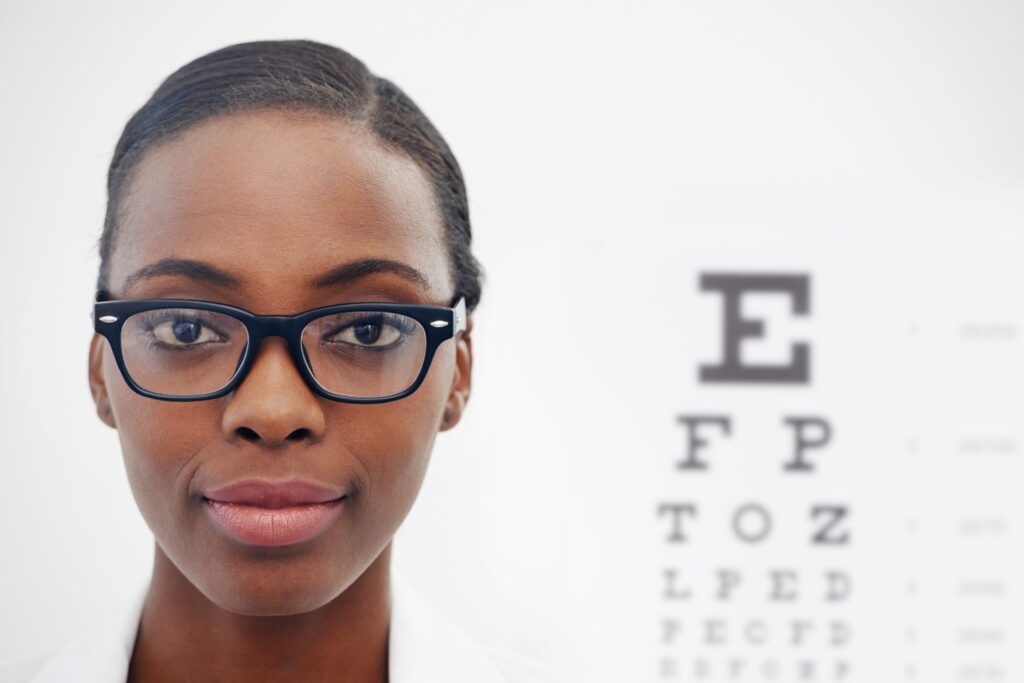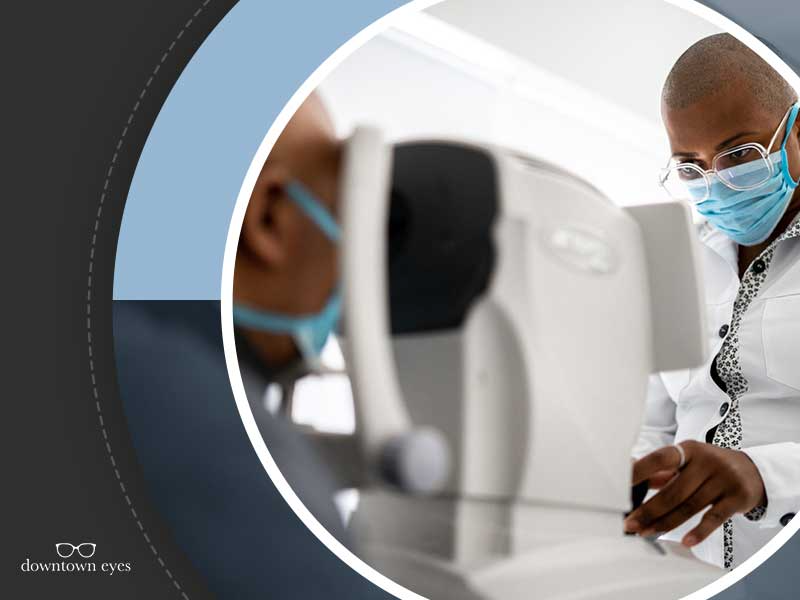Specialist Eye Doctor in Riverside: Your Vision is Our Priority
Specialist Eye Doctor in Riverside: Your Vision is Our Priority
Blog Article
The Comprehensive Eye Exam: What to Anticipate During Your Visit to the Eye Physician
A see to the eye doctor for a comprehensive eye examination is more than a regular exam; it is an important step in protecting your aesthetic health and wellness. What precisely occurs throughout the eye health and wellness assessment, and how does it influence the prescription process?
Initial Consultation
The initial assessment during an eye exam serves as a critical foundation for recognizing an individual's visual wellness requirements. This phase sets the tone for the entire evaluation procedure, allowing the eye doctor to gather vital details regarding the person's case history, way of life, and specific vision issues. By thoroughly examining any pre-existing conditions, drugs, or previous surgeries, the eye care professional can customize the evaluation to deal with individual demands effectively.

Furthermore, the initial consultation is an opportunity for individuals to voice any concerns or questions, fostering a collaborative partnership with their health care service provider. This interaction not only ensures that the individual really feels educated and comfy yet additionally empowers them to get involved proactively in their eye health and wellness management. Collectively, these discussions make it possible for the eye doctor to develop a customized evaluation plan, making certain ideal care and specific diagnosis.
Aesthetic Acuity Test
Starting the core elements of an eye examination, the aesthetic skill examination is created to assess the intensity and quality of a patient's vision. This critical analysis helps figure out exactly how well a person can recognize letters or symbols at a standardized distance, typically utilizing a Snellen chart (Opticore Optometry). The graph makes up rows of letters that decrease in dimension inside out, with the client placed at a traditional range of 20 feet
Throughout the test, the patient is asked to cover one eye and check out out loud the tiniest line of letters they can see plainly. This procedure is repeated for the various other eye. The outcomes are videotaped as a portion, with 20/20 vision showing normal visual skill-- where the individual can see at 20 feet what a person with normal vision can see at that distance.
The visual skill test also determines prospective refractive mistakes such as nearsightedness, astigmatism, or hyperopia, which may require rehabilitative lenses. By establishing a standard of aesthetic efficiency, the examination is a crucial diagnostic device that aids the eye care professional in developing an appropriate treatment plan tailored to the individual's one-of-a-kind visual needs.
Eye Health Assessment
Following the aesthetic skill test, an extensive eye health assessment is conducted to make certain the general well-being of the eyes. This important go to website segment of the eye test includes an extensive assessment of both the outside and inner frameworks of the eye.
Following, attention changes to the interior structures. Through making use of ophthalmoscopy or fundus digital photography, the retina, optic nerve, and blood vessels are carefully evaluated. This action is crucial for determining conditions such as retinal detachment, glaucoma, or diabetic person retinopathy. Oftentimes, student dilation is done to boost exposure of the inner eye frameworks, although this may lead to short-lived light level of sensitivity for the individual.
In addition, intraocular stress is measured to screen for glaucoma danger. This is generally done using tonometry, which can find raised pressure degrees that could suggest possible damages to the optic nerve. Jointly, these analyses create a thorough analysis to maintain eye health.
Refraction and Prescription
Refraction is an advanced procedure performed by eye treatment experts to identify the precise lens power required to deal with refractive mistakes such as myopia, hyperopia, presbyopia, and astigmatism. The goal of this procedure is to analyze just how light bends as it passes via the eye, enabling the expert to figure out whether restorative lenses are necessary for enhanced visual skill.
During the refraction procedure, the client is asked to check out a phoropter, a device which contains different lenses. The More hints specialist will systematically transform these lenses and ask the client to compare clarity between alternatives until the most effective possible vision is attained. This procedure is essential in crafting a precise prescription that defines the suitable lens power for spectacles or get in touch with lenses.
The prescription stemmed from this treatment not just maximizes vision but additionally acts as a structure for choosing ideal restorative eyewear. It is vital to make certain that prescriptions are regularly updated, as adjustments in vision can occur in time, stressing the importance of routine eye exams. This meticulous focus to detail assists preserve clear, comfy vision in day-to-day life.
Follow-Up Suggestions

Throughout a follow-up browse through, the eye medical professional will certainly conduct a collection of examinations to examine visual skill and look for any changes in vision that could demand an upgrade to the prescription. In addition, the follow-up supplies a chance to talk about any discomfort or concerns experienced with present eyeglasses. Modifications can be made to make certain convenience and effectiveness, whether through lens alteration or frame modifications.
For clients with ongoing problems such as glaucoma, diabetes-related eye problems, or macular deterioration, more constant follow-ups might be required. These consultations are important for managing and possibly slowing the development of eye condition. Complying with these recommendations can considerably add to keeping aesthetic health and preventing long-lasting complications.
Conclusion
The comprehensive eye exam is a crucial process for keeping aesthetic wellness, encompassing a detailed analysis of medical history and vision issues. Key parts consist of the visual skill examination, which reviews vision clearness, and the eye wellness analysis, which analyzes the total problem of the eyes.
A browse through to the eye medical professional for a thorough eye examination is more than a routine check-up; it is an important action in protecting your visual health.Kicking off the core components of an eye exam, the aesthetic acuity examination is made to analyze the intensity and quality of a patient's vision.Following the aesthetic skill test, an extensive eye health and wellness assessment is carried out to guarantee the total well-being of the eyes. These check outs enable the eye care professional to check modifications in vision, update prescriptions, and analyze the total wellness of the eyes. Trick components consist of the visual acuity test, which examines eyesight clearness, and the eye wellness analysis, which analyzes the total condition of the eyes.
Report this page